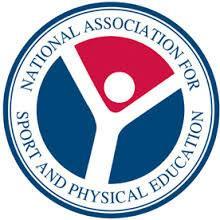
The National Association for Sport and Physical Education (NASPE), headquartered in Reston, Virginia, is the largest of the five professional organizations within the American Alliance for Health, Physical Education, Recreation and Dance (AAHPERD) (now known as SHAPE America). As a nonprofit membership association they “enhance knowledge, improve professional practice, and increase support for high quality physical education, sport, and physical activity programs.”1 The association offers an array of informational conferences, valuable resources, and grants and awards to its members.
The National Association for Sport and Physical Education's members include physical education teachers, coaches, athletic directors and trainers, researchers, sport management professionals, and college and university faculty.2 For their over 15,000 members, NASPE publishes physical education position statements concerning physical education, physical activity, professionalism, and technology issues.3
They have also published national standards for physical education, for sport coaches, and for physical education teacher education. The National Standards for Physical Education encourages the development of physically-educated K-12 children who have the knowledge, skills, and confidence to enjoy healthy physical activity through a quality physical education program. The National Standards for Sports Coaches provide athletic coaches with the fundamental competencies they should possess to ensure a safe, quality athletic program. The National Standards & Guidelines for Physical Education Teacher Education provide the basic knowledge and skills required for educational programs for physical education teachers and teacher certification.4
The national guidelines that the National Association for Sport and Physical Education publishes are concerning physical activity and physical education. Their Physical Activity Guidelines recommend that children aged 5 through 12 accumulate a minimum of 60 minutes of activity each day and avoid long periods of inactivity. NASPE's Physical Education Guidelines recommend elementary schools provide 150 minutes of instructional physical education each week and that middle and high schools provide 225 minutes per week.5
The National Association for Sport and Physical Education, in conjunction with AAHPERD, created the Let’s Move Active Schools initiative to increase physical activity “before, during, and after school” and to assist schools in creating a comprehensive physical activity program that incorporates both the Physical Activity Guidelines and the Physical Education Guidelines.6 This initiative is also in support of First Lady Michelle Obama's Let’s Move! campaign to solve childhood obesity within a generation.
In May of 2011, the National Association for Sport and Physical Education joined with The Century Council to celebrate May as the National Physical Fitness and Sport Month and to focus specifically on the Let’s Move Active Schools initiative during May 1-7, the National Physical Education and Sport Week. The Century Council is a national nonprofit organization that fights drunk driving and underage drinking. In support of this partnership, Susan Molinari, chairman of The Century Council, cited research indicating that “for your brain to function at its peak, your body needs to move and that aerobic exercise prepares your brain to learn, improves mood and attention, lowers stress and anxiety, helps stave off addiction, and controls the effects of hormonal changes.”7
NASPE's goal for the Let’s Move in School initiative is that “youth will develop the knowledge, skills, and confidence to be physically active for a lifetime.”8 They are supported by the President's Council on Fitness, Sports & Nutrition and more than 40 national nonprofit organizations.9
- 1. “Mission and Strategic Plan.” National Association for Sport and Physical Education. < http://www.aahperd.org/naspe/about/mission.cfm > 14 July 2011.
- 2. “Welcome.” National Association for Sport and Physical Education. < http://www.aahperd.org/naspe/about/ > 14 July 2011.
- 3. “Physical Education Position Statements.” National Association for Sport and Physical Education. < http://www.aahperd.org/naspe/standards/PEPS.cfm > 14 July 2011.
- 4. “NASPE National Standards.” National Association for Sport and Physical Education. < http://www.aahperd.org/naspe/standards/nationalStandards/ > 14 July 2011.
- 5. “National Guidelines.” National Association for Sport and Physical Education. < http://www.aahperd.org/naspe/standards/nationalGuidelines/ > 14 July 2011.
- 6. “The National Association for Sport and Physical Education Joins with The Century Council to Promote National Physical Education and Sport Month.” National Association for Sport and Physical Education. < http://www.aahperd.org/naspe/advocacy/mediaCenter/pressReleases/ > 14 July 2011.
- 7. Ibid.
- 8. “Improving Health and Academic Performance.” < http://www.aahperd.org/letsmoveinschool/ > 14 July 2011.
- 9. Op.cit., “The National Association for Sport and Physical Education Joins with The Century Council to Promote National Physical Education and Sport Month.”

